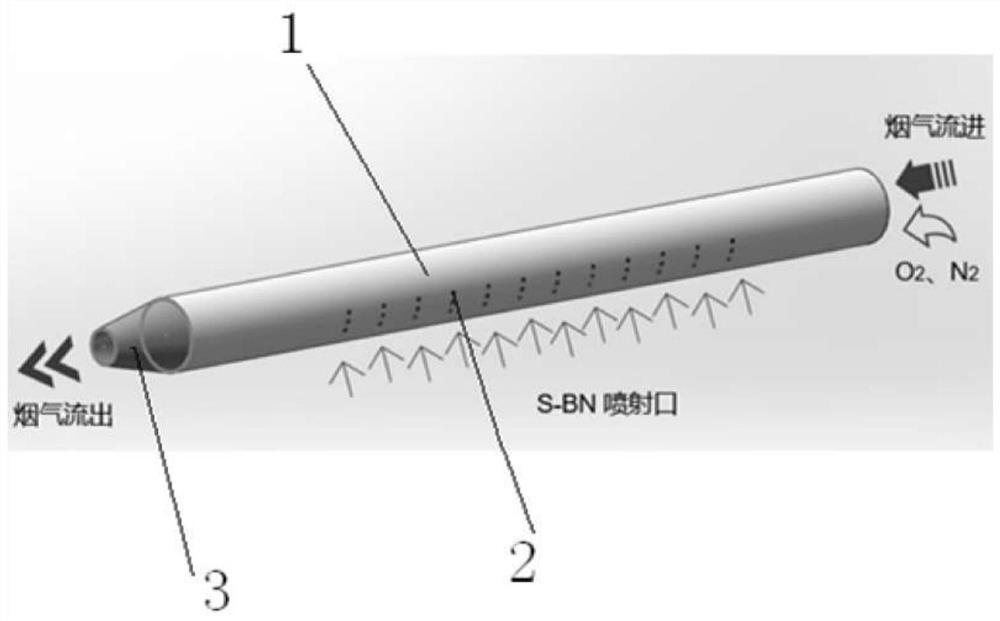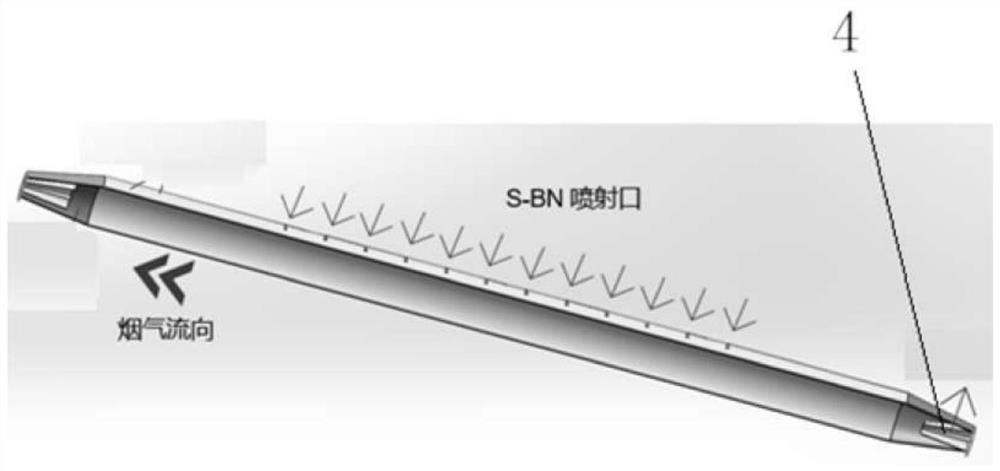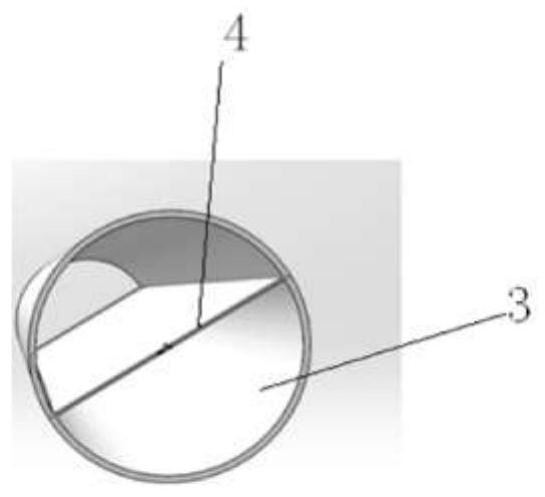A method and device for controlling sludge incineration fine particles by using boron nitride
A technology of fine particulate matter and sludge incineration, which is applied in chemical instruments and methods, separation methods, combined devices, etc., to achieve good auxiliary and synergistic effects, large specific surface area, and reduce equipment investment.
- Summary
- Abstract
- Description
- Claims
- Application Information
AI Technical Summary
Problems solved by technology
Method used
Image
Examples
Embodiment 1
[0033] A method for controlling sludge incineration fine particles by utilizing boron nitride, comprising the steps of:
[0034] (1) Synthesis of fine particulate matter (PM10)
[0035] Mineral fine particulate matter (PM10) is synthesized according to the composition of sludge incineration fine particulate matter (except heavy metals), and under the condition that the total percentage of mineral particulate matter is stable at 88%, each particulate matter component is selected in order, followed by CaO: 17 %, SiO2: 15%, Fe2O3: 29%, Al2O3: 19%, MgO: 2.5%, P2O5: 5%, K2O: 0.5%; since the fine particles in addition to heavy metals, other components account for 88%, so equipped with 4.4g of fine particle sample 5g×0.88=4.4g, according to the proportion of the above-mentioned mineral particles, mix the powders of the mineral particles together, shake the oscillator for 20 minutes, and then add an organic flocculant to make it agglomerate. The particles were then ground in a mill a...
Embodiment 2
[0045] A method for controlling sludge incineration fine particles by utilizing boron nitride, comprising the steps of:
[0046] (1) Synthesis of fine particulate matter (PM10)
[0047] According to the composition of sludge incineration particulate matter (except heavy metals), fine particulate matter (PM10) is synthesized. Under the condition that the total percentage of mineral particulate matter is stable at 88%, the particulate matter components are selected in order, followed by CaO (18%), SiO2 (16%), Fe2O3 (28%), Al2O3 (18%), MgO (1.5%), P2O5 (5%), K2O (1.5%); except for heavy metals in fine particles, other components account for 88% , so, equipped with 4.4g sample of mineral fine particles (5g×0.88=4.4g), mix the powders of various mineral particles, shake the oscillator for 30min, add organic flocculant to make it agglomerate into particles, and then grind Grinding in the machine, blowing into the ELPI with a blower, and collecting fine particles with a particle siz...
Embodiment 3
[0055] A method for controlling sludge incineration fine particles by utilizing boron nitride, comprising the steps of:
[0056] (1) Synthesis of fine particulate matter (PM10)
[0057] According to the composition of sludge incineration particulate matter (except heavy metals) to synthesize fine particulate matter (PM10), under the condition that the total percentage of particulate matter composition is stable at 88%, the composition of each mineral particulate matter is selected in order, followed by CaO (19%), SiO 2 (17%), Fe 2 O 3 (29%), Al 2 O 3 (17%), MgO (1%), P 2 O 5 (4%), K 2 O (1%); since the proportion of other components in the fine particles is 88% except for heavy metals, a 4.4g sample of fine particles (5g×0.88=4.4g) is prepared, and the powders of the particles are mixed together and shaken by an oscillator. After 40 minutes, an organic flocculant was added to make it agglomerate into particles, which were then ground in a grinder, and blown into the EL...
PUM
| Property | Measurement | Unit |
|---|---|---|
| particle diameter | aaaaa | aaaaa |
Abstract
Description
Claims
Application Information
 Login to View More
Login to View More - R&D
- Intellectual Property
- Life Sciences
- Materials
- Tech Scout
- Unparalleled Data Quality
- Higher Quality Content
- 60% Fewer Hallucinations
Browse by: Latest US Patents, China's latest patents, Technical Efficacy Thesaurus, Application Domain, Technology Topic, Popular Technical Reports.
© 2025 PatSnap. All rights reserved.Legal|Privacy policy|Modern Slavery Act Transparency Statement|Sitemap|About US| Contact US: help@patsnap.com



